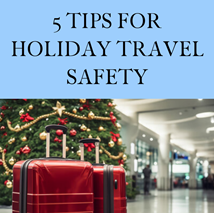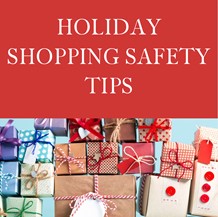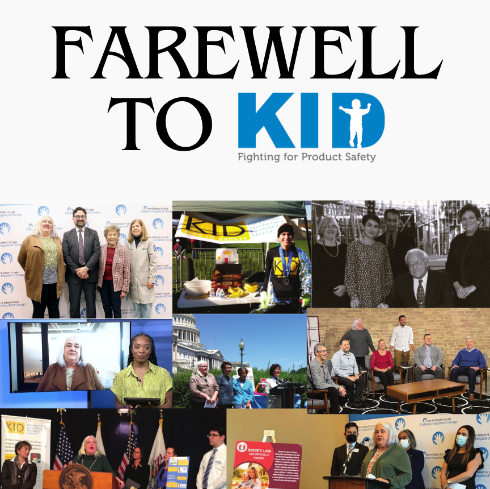
The holidays are a special time to connect with loved ones, but if you’re traveling with children, safety should be a top priority. Here are five travel tips to help your holiday be as safe as it is memorable.
Tip #1: Verify Hotel and Airbnb Safety Protocols
When booking accommodations, don’t hesitate to ask questions! Contact your hotel or Airbnb host to inquire about their safety measures:
Anchor Safety: Furniture tip-overs are more common than you may suspect. A child is injured by a tip-over incident every 30 minutes. Reach out to your Airbnb host or hotel manager to see if the furniture such as dressers and TV stands are anchored to the wall, and if not, request that they do so or find a location to stay where they anchor furniture.
Crib Standards: Request the crib’s make and model and check the CPSC website to see if it has been recalled. Always check if there is any extra padding in the crib such as crib bumpers and remove them immediately. If possible, bring your own safety tested portable crib or bassinet for a safe sleeping arrangement.
Cordless Window Blinds: Window blinds with cords can pose a strangulation risk to young children. While cordless blinds are now the safety standard, many hotels and rentals still use corded blinds. If your accommodation has corded blinds, tie them out of reach and never leave your child unsupervised around them.
Tip #2: Car Seat Safety
Before hitting the road follow these tips.
- Correct Installation: Always install car seats in the back seat, making sure they’re facing the correct direction for your child’s age and size.
- Correct Age, Weight, and Height: You can read the car seat’s size limits on the packaging.
- Check for Recalls and Expiration: Car seats typically have a lifespan of six to eight years, and some include expiration dates. The latest recalls from the past 10 years can be found here.
- Avoid Second-Hand Car Seats: It’s best to avoid used car seats, as their safety history is often unknown. Car seats that have been in accidents may not provide full protection in future incidents.
- If you are flying, take your car seat with you and use it on the plane: The label on the restraint of the car seat should read: “This restraint is certified for use in motor vehicles and aircraft.” Check the seat size, too. A car seat wider than 16 inches can’t fit properly in a coach seat on a plane.
- Remove Winter Coats: Remove your child’s winter coat before buckling them in the car seat. Thick and puffy coats will compress on impact, leaving a dangerous gap which the child can slip through.
Tip #3: Practice Safe Infant Sleep While Traveling
Safe sleep is crucial, whether you’re at home or on vacation. To help prevent sleep-related injuries, follow the ABCs of safe sleep:
- Alone: Baby is Alone and has their own separate sleep space.
- Back: Baby is placed to sleep on their Back.
- Crib: Baby sleeps in a Crib, bassinet, or play yard that meets the federal safety standard.
Remember, never place any extra padding or blankets in the crib even if it is cold.
Tip #4: Are The Old Toys At Grandmas Safe For Your Kid To Use?
There’s nothing better than pulling out your old toys for your child to play with while visiting Grandma. Be sure to keep in mind that these objects may pose a danger to your child such as lead poisoning or choking hazards. Have your child wash their hands as soon as they are done playing with older toys. In addition, watch for small parts on toys that could be choking hazards – if it fits in a toilet paper tube it is too small for children under 3.
Tip #5: All That Baby Advice
When you’re traveling with a baby, everyone, from family to strangers, seems to have advice to share. They might mean well with tips on sleep, calming tricks, or toy ideas, but not all of it is actually safe. You’ve put in the work to know what’s best for your child, so stick with that. A quick “thanks for the advice” can keep things friendly while you do what’s right for your baby. Trust what you know works and keeps them safe.


